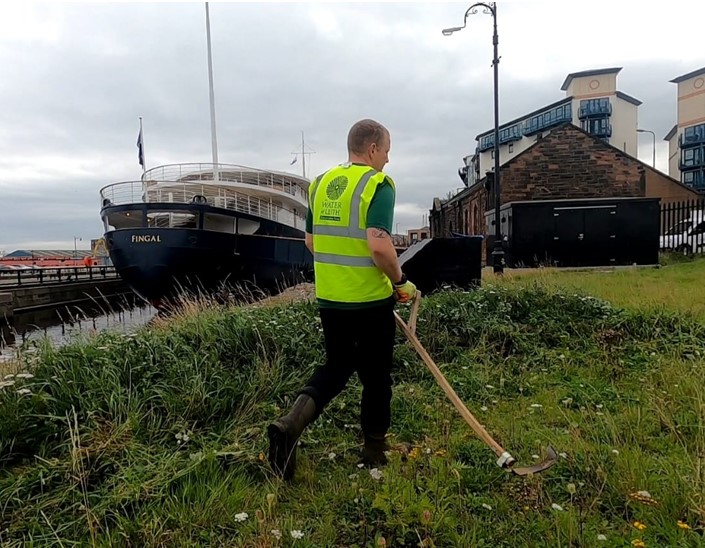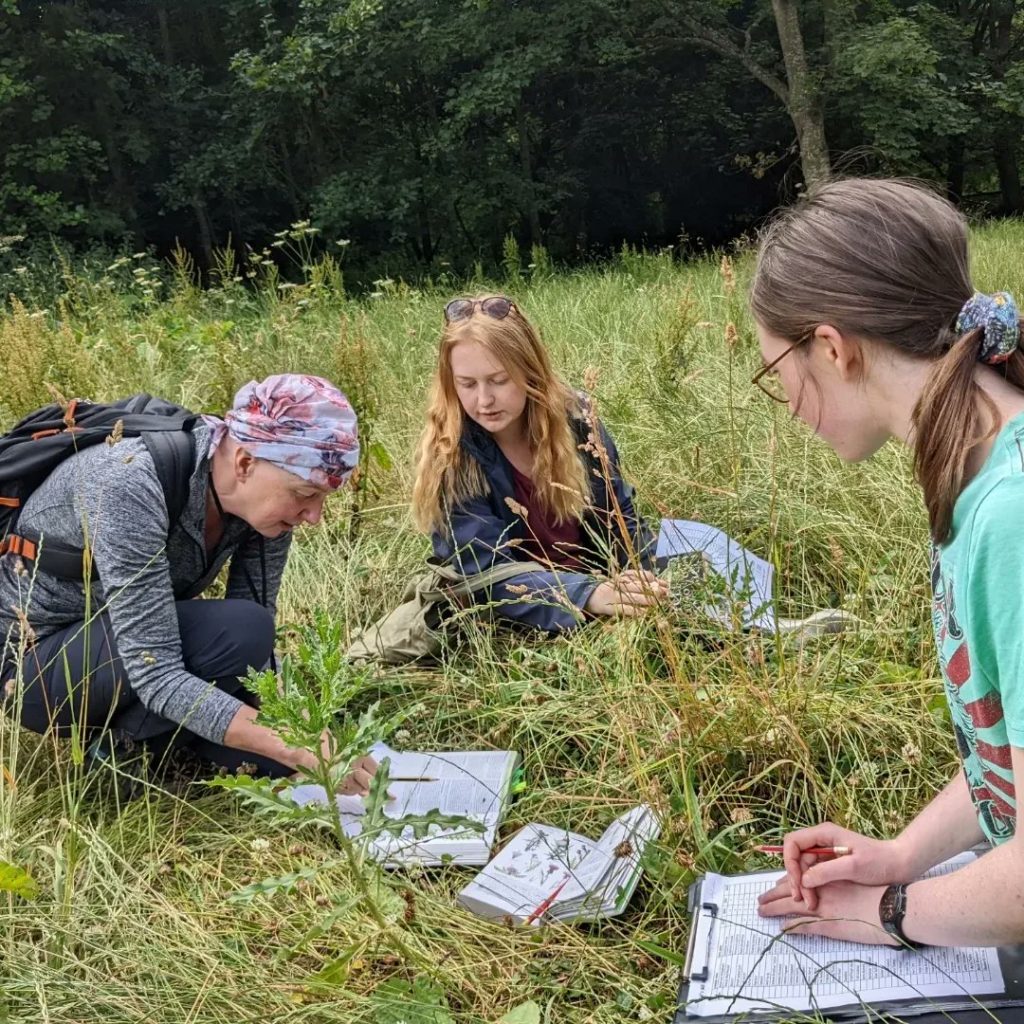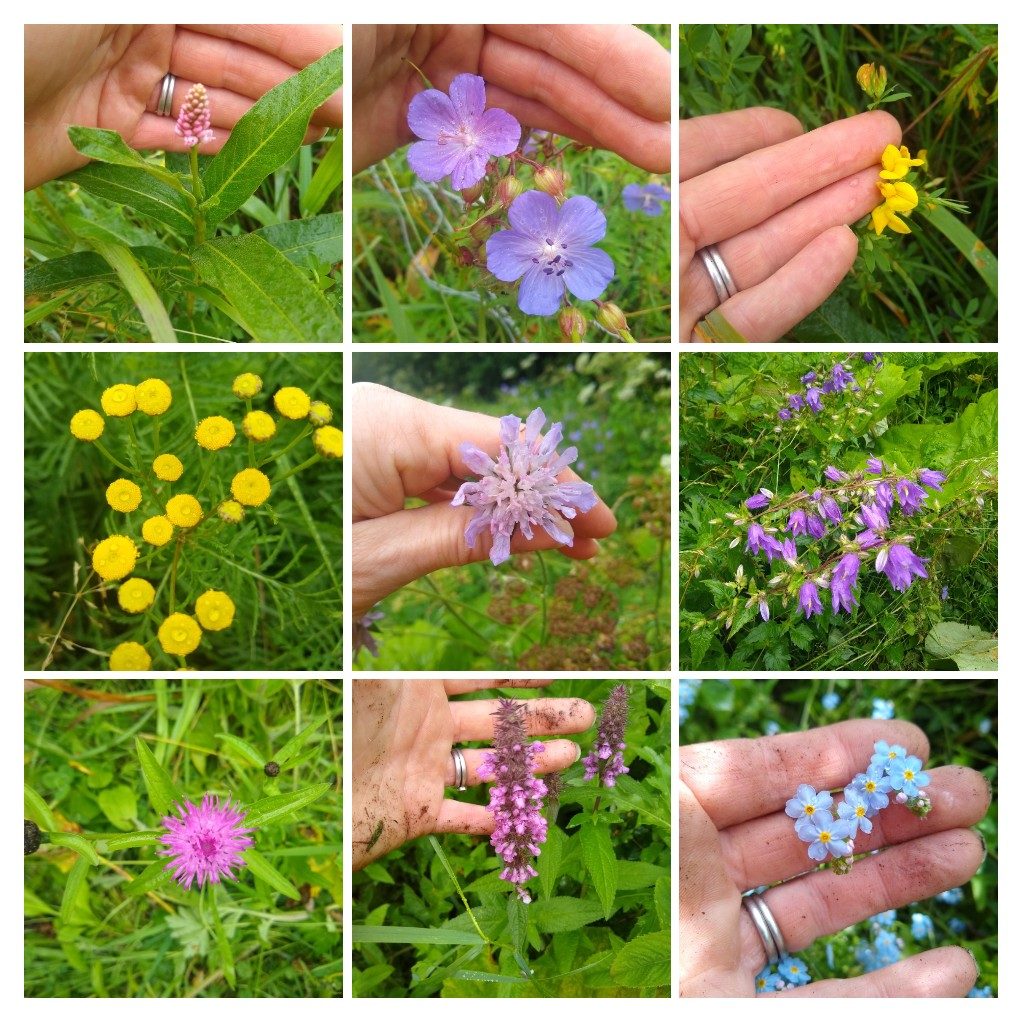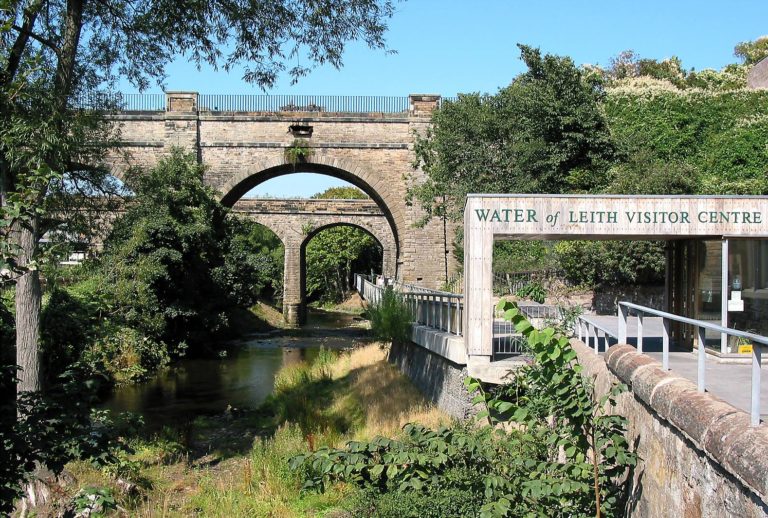For the last four years, our dedicated volunteers have been steadily collecting data of each of our wildflower meadows. This information is invaluable, showing what species we have in each of our meadows and if biodiversity is increasing or decreasing year on year. These 8 wildflower meadows are vital for pollinators, and they support a nature corridor along the Water of Leith for bees and butterflies to travel, as well as supporting other wildlife around the city and boosting diversity in the riparian strips next to the river. The map below highlights the locations of each of our managed wildflower meadows

When recording started in 2019, we surveyed our two largest and oldest meadows; Bogs Mill Meadow and Bells Mill Meadow. From here, not only has overall biodiversity increased but we have added six other wildflower meadows sites which we now survey and manage, greatly increasing the nature connectivity.
From 2019, the overall diversity of wildflowers and grasses along the Water of Leith has increased every year (Figure 1). This increase is, in part, due to an increase in the number of survey sites. However, when we break down the result to individual sites, we can see that all but one site has increased in plant diversity every year since surveying began (Figure 2).
Figure 1. Line graph to show plant diversity along The Water of Leith from 2019 – 2023.

We have recorded species such as White Clover, Meadow Vetchling and Tansy which have been present every year. Species we have only seen in the last few years include Tufted Vetch and Common Spotted Orchid and this year we have added 147 new species of wildflowers and grasses to our survey lists. This year we have also surveyed two more smaller gardens at Fingal’s, Leith and Anderson Place, so this information can be used and added to the library of data indicating the state of nature connectivity along the Water of Leith, as well as a greater understanding of the ecosystem at a localised level.
Figure 2. Line graph to show plant diversity at each wildflower survey site from 2019 – 2023.

Wildflower meadows make up complex ecosystems that can support a large amount of biodiversity in a localised area. Herbaceous plants (non woody plants) can establish quickly in nutrient poor soil and they require a low amount of maintenance to achieve long term biodiversity net gain. This long-term increase in species richness is particularly important in the face of climate change and more extreme weather patterns as it makes ecosystems more resilient. It’s understood that wildflower meadows can be up to three times more diverse in both plants and insects compared to a garden lawn. Therefore, the composition of our wildflower meadows can potentially support a variety of pollinators such as bees, butterflies, moths, beetles and flies which, in turn, can increase bird and small vertebrate diversity – not to mention increase soil carbon sequestration and provide positive benefits for people.
The increase in diversity is largely due to the careful management of the meadows. This management is ongoing which includes a cut and rake regime. Our volunteers use the traditional scything technique to cut the meadows and rake off cut vegetation. This naturally lowers the nutrients of the soil, allowing wildflowers to colonise and prevent other plants such as creeping thistle and butterbur from becoming dominant. At times we have also planted plugs which helps to increase the diversity of the wildflower meadows, giving some plants a helping hand to become established.

As part of the ongoing meadow management, Yellow Rattle is planted from seed in the autumn or winter. Yellow Rattle is a herbaceous wildflower that acts a parasite on grass. The roots of Yellow Rattle attach themselves to neighbouring plant root – with a preference for grasses. It extracts water and nutrients from these roots, naturally preventing the establishment of grasses and creating more space for wildflowers to grow.
The data collected in our wildflower surveys helps to inform how we manage these meadows moving forwards, if we need to adapt our management style or use different techniques to increase or stabilise biodiversity. The results of these survey also go to The Wildlife Information Centre which contributes to the national UK database, helping to understand the state of nature across the UK.
As we can see from our data, the diversity at Bells Mill Meadow has decreased. This is due to increased trampling by dogs enjoying the open space, so we used fencing to protect the meadow area from further trampling. Therefore, this coming autumn we will be planting some more wildflower plugs and seeds in the meadow to help plants become more established and encourage an upward trend in diversity again.
All of this information, expertise and data collection is as a result of our tremendous team of dedicated volunteers. Come rain or shine, they are out there with plant ID books and hand lenses, identifying and recording the plants present in our wildflower gardens. All this has helped to dramatically increase nature connectivity along the Water of Leith. These meadows are vital for wildlife to travel through Edinburgh and help to maintain a resilient ecosystem.




